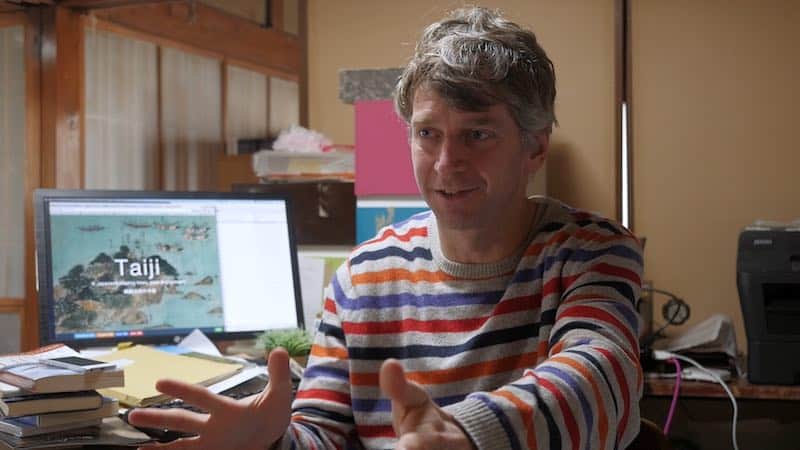A Whale of a Tale from director Megumi Sasaki is a years-long examination of the lives of local whalers, global activists with an American journalist in the whale and dolphin killing town of Taiji, Japan.
Not everything is as black and white as it seems in Taiji, especially as we were led to believe in the earlier film about the same small town and its fishing habits, The Cove.

American journalist Jay Alabaster, who has lived in Japan for about 20 years, takes us into the story. Back in 2010, The Cove explored the town’s longstanding whale and dolphin hunting traditions. That film won an Academy Award. Because of the publicity, Taiji became the go-to destination and battleground for activists from around the world.
A constant barrage of negative publicity generated by save the whale and save the dolphin groups overwhelmed the small town of 3000 people. Greenpeace, The Sea Shepherds, and other groups maintained a years-long global publicity campaign against the fishing practices in the small town.
The fish were used for food when the story began. Dolphins were also captured and sold to aquariums and Sea World type places all over the globe. That was where the real money came from.
A Whale of a Tale took in everyone’s viewpoint. Activists, fishermen, families, school children, town officials. Cultural differences and conflicts were examined.
None of the species of dolphins that the people in Taiji captured or ate are considered endangered. At least that wasn’t part of the global outcry targeting this little town.
The story took several years to film and tell. And it isn’t over yet. But here’s some of what’s changed. People slowly stopped eating whale and dolphin meat because it’s poisoned with mercury. This affects tuna consumption in the U.S. as well. New legislation has been enacted to stop what is called ‘drive-by’ hunting to capture dolphins to sell to dolphin shows. This has been a hit to the income of the townspeople, because live dolphins are worth a lot more than dead ones. It’s had a global effect on dolphin shows, which many activists consider a good thing. In 2015, Japan stopped protestors and activists at the border and no longer allowed them in to harass the citizens.
The town has adapted by changing income sources. They’re creating a world-class whale museum and whale research institute. It attracts both tourists and scientists.
Director Megumi Sasaki made an intesting statement:
In 2009, I was shocked to see the documentary film, “The Cove”. The storytelling was powerful, yet I sensed something in the depiction was not right. Although dolphin hunting is legal in Japan and Taiji hunts only 10% of the country’s total catch, the film selected a handful of Taiji fishermen and portrayed them as “notorious villains”.
The documentary is a powerful tool in revealing wrongdoings and abuses of power. But in this case, a Hollywood film crew with a multimillion-dollar budget pounced on a sleepy village in Japan, thrusting cameras in the fishermen’s faces. This was not about “serving justice”. It was bullying, pure and simple.
When the film won an Academy Award, I wondered how the little town would be affected. “A Whale of a Tale” is the answer. I felt a sense of urgency to give voices to those who did not have them. I was tired of the hate and division that had continued for over half a century between my two beloved countries, caused by the whale and dolphin controversy. . . . The colliding forces here are not Japan vs. the West, but globalism vs. localism.
The thing that struck me about this documentary is that it holds the tension between the opposing cultural points of view without being judgmental. Everyone is sincere and honest about their positions. In the beginning the protestors were bullies and obnoxious. As time passed, the two sides attempted to talk and work things out. Everybody learned something.
A Whale of a Tale will be released on VOD exclusively on iTunes in the US, Canada and UK on Tuesday, October 30. If you remember The Cove, and especially if it moved you to protest the 400 year old traditions of the people in this tiny town, I suggest you watch it. You will still love whales and dolphins after you’ve seen it, but you’ll also know a lot more about the story than the one-sided version you remember.
A Whale of a Tale (US Trailer) from Fine Line Media on Vimeo.

Pingback: Recommended Foreign Language Films and TV Series - Old Ain't Dead